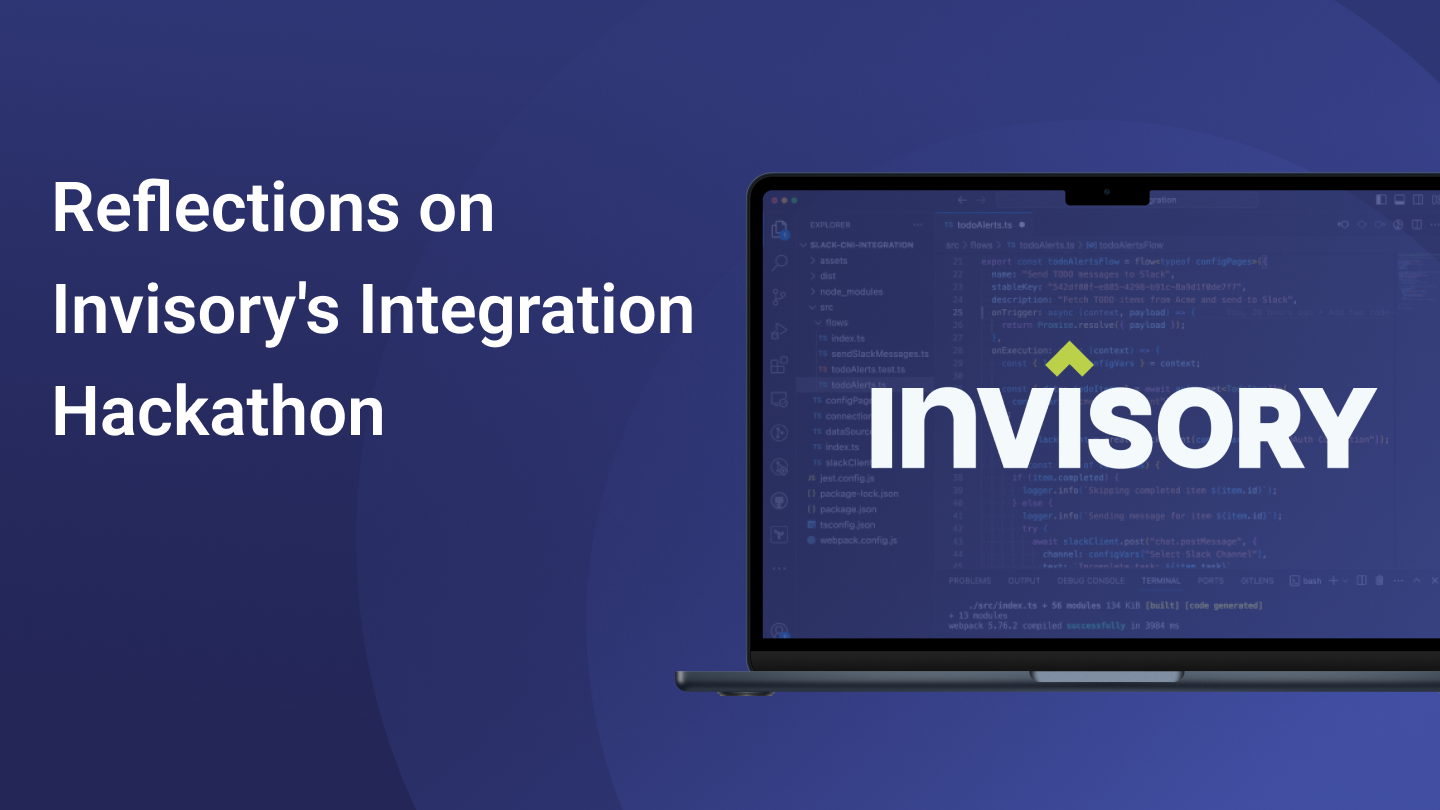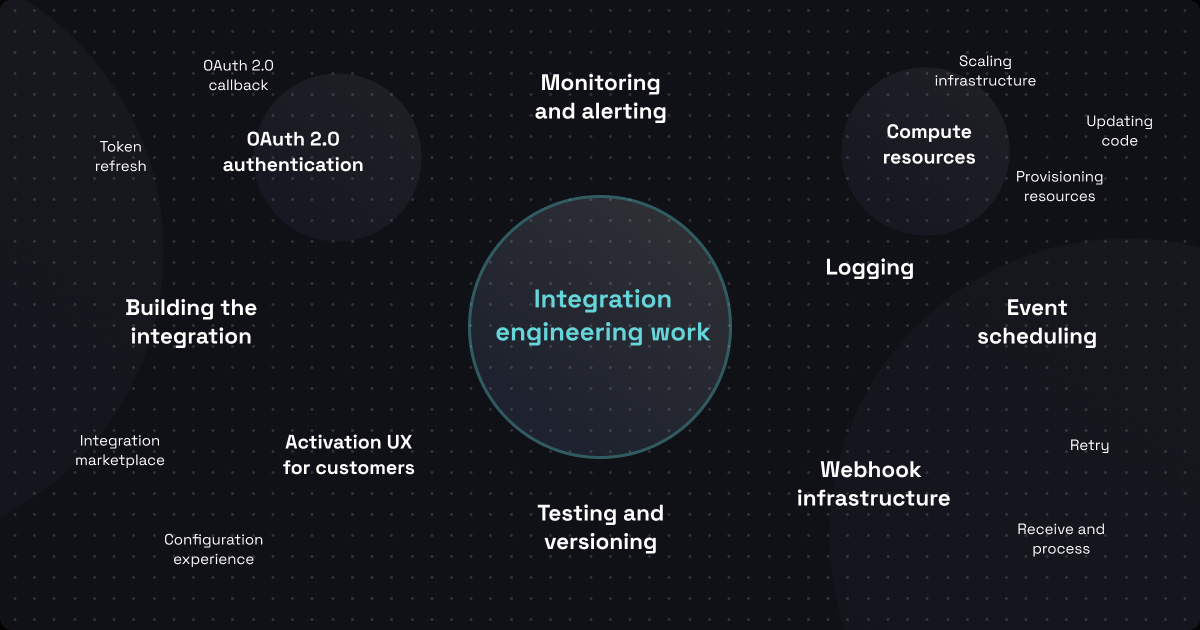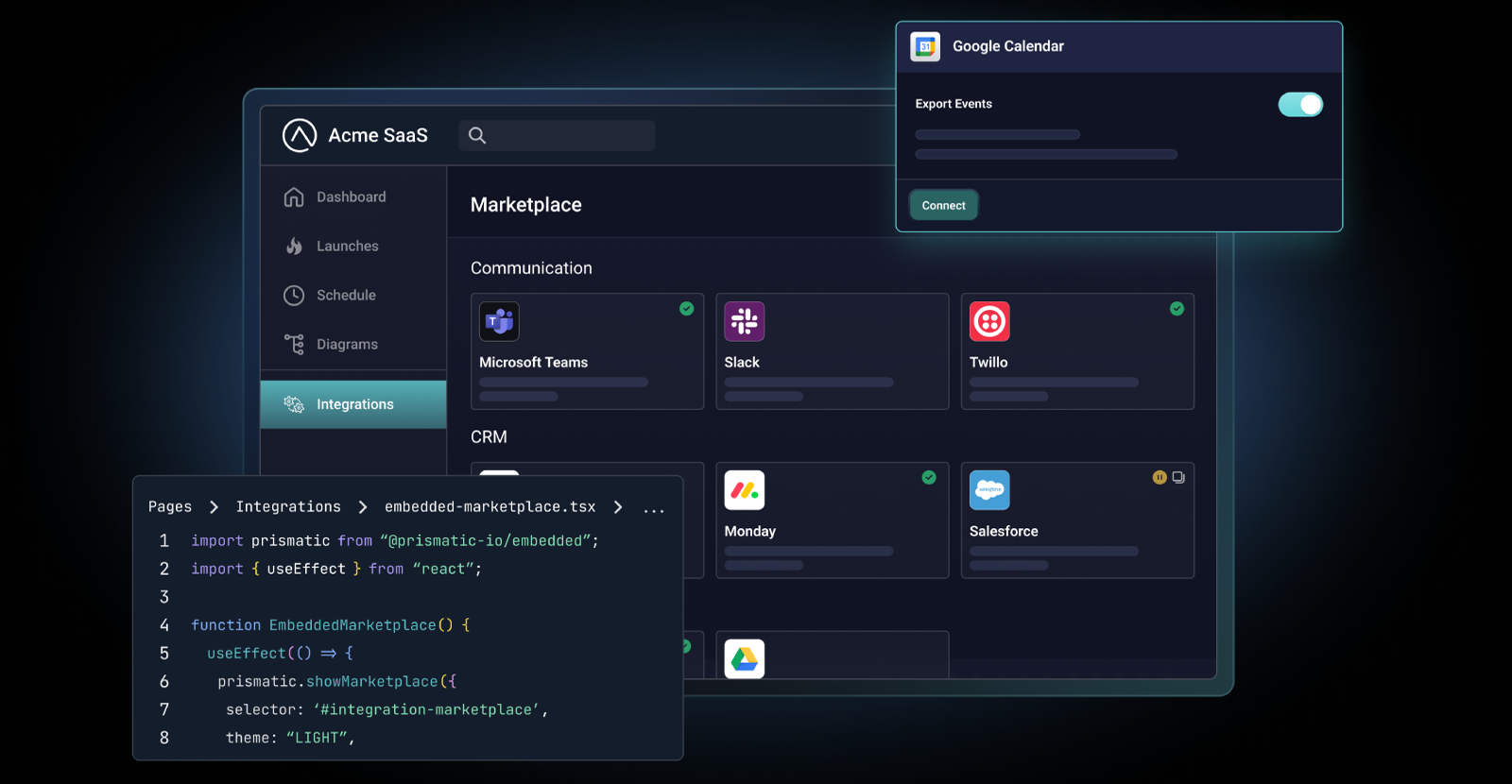We are visiting today with Guy Greenstein, Head of Engineering at Invisory. His team recently held a hackathon focused on building integrations with Prismatic's embedded iPaaS. We sat down with him to learn more about his experience.
Bru: Starting with the big picture, why are integrations important to your customers?
Guy: Invisory helps ISVs (independent software vendors) go-to-market on cloud marketplaces such as AWS, Azure, Google Cloud Marketplace, and Salesforce AppExchange with fewer hurdles and more success. We do this with a mix of GTM strategy (every Invisory customer works with a Partner Strategist who helps them craft a GTM strategy for each cloud marketplace) and product. The Invisory platform helps ISVs list and more seamlessly engage in co-selling with centralized cloud marketplace data and functionality in one place. The platform, which I oversee, ensures customers can manage the technical side of cloud marketplace selling – listing, metering, making private offers, transacting, and co-selling – for multiple cloud marketplaces.
In addition, our customers need to know when actions have been taken or need to be taken in their marketplaces. For this, we need to integrate with notification tools like Slack and Teams. We also assist our customers in organizing and planning their marketplaces using tools like Asana and Google Calendar.
Bru: What led you to do a hackathon for integrations?
Guy: We went into this as much to build up process and knowledge of Prismatic as to actually build integrations. We figured that creating new integrations in a hackathon or peer-coding environment would be beneficial in a few ways:
- Integrations can often be tricky to set up, with each having its own special stipulations, but conversely, they are good to go once you've broken through that barrier. The hackathon allowed us to quickly troubleshoot integrations as a team, getting done in a few days what could have taken weeks of back and forth between team members and stakeholders.
- Integrations are often the basis for a future set of functionality. In fact, it's often hard to define the functionality you can build off an API until you have properly integrated and seen the functionality or data in question. Spinning up an integration and experimenting with its input and output in a collaborative environment was awesome for new feature ideas.
- Integrations can be quite open-ended. So, the hackathon allowed participants to make their own choices about what they worked on while ensuring long-term value for the business goals presented.
Bru: How did you choose which integrations the team would work on?
Guy: We outlined business goals and left it open-ended how different integrations could serve those goals. We had categories (marketplaces, alerts, and project/task management), and as long as an integration fell within one of those it was a valid choice for our devs to tackle.
Bru: It's been a few months since your hackathon. Can you update us on the integrations started during the hackathon?
Guy: The hackathon was as much a proof of concept for Prismatic in and of itself than anything. The main goal we outlined was to create a process and familiarity with building integrations using Prismatic. The integrations we built during the hackathon won't go into production until later this year with a big release of features. But we have been switching all of our old integrations over to Prismatic and have found a lot of success with our new model, using what we learned during the hackathon.
Bru: When do you think you might do another hackathon?
Guy: We hope to set one up within the next 6 months. We want to get into a pattern of doing it a couple times each year.
Bru: Sounds good. What would you do differently for the next hackathon?
Guy: It was only three days long, including debrief and demos at the end. I think I would make it 4 to 5 days next time.
Bru: How did the hackathon help move your team and product forward?
Guy: The hackathon defined the basis for our process with Prismatic. Between architecture, infrastructure, and team familiarity with the Prismatic product, I don't believe we could have onboarded faster and more seamlessly than we did. It was invaluable to have everyone in the room discussing how Prismatic fits into our current product and technical ecosystem and getting hands-on experience building integrations.
Bru: What tips do you have for other Prismatic customers who would like to do an integration hackathon?
Guy: Just do it. Whether you're just starting and gaining familiarity with Prismatic or your team is seasoned at building integrations, there is so much you can get out of it.
Come with business goals in mind to ensure value generation. But leave what you can open-ended, and individuals will surprise you with their ingenuity. We have a dev with an accounting background who wowed us with what we could be doing for users in the financial industry.
Bru: Thank you, Guy, for giving us the inside scoop on your hackathon. May your next one be even more profitable for you and your team!
For more info, here's the link to Invisory's blog post about the hackathon.
For any of our customers who'd like to do a hackathon, let Customer Success know and we'll be glad to assist.




